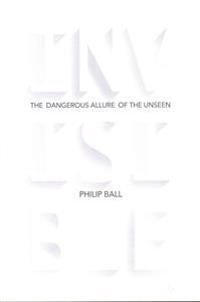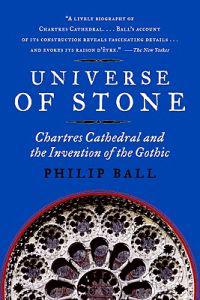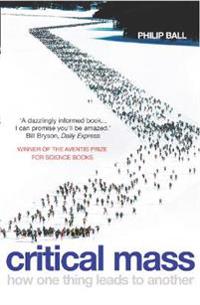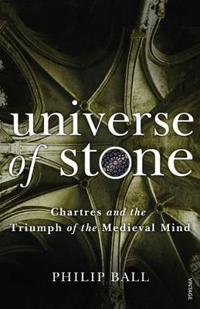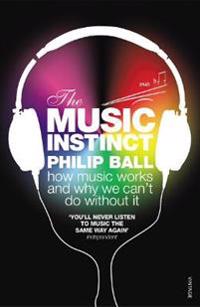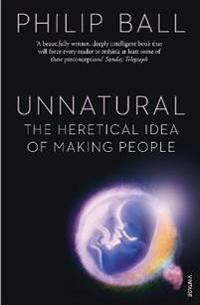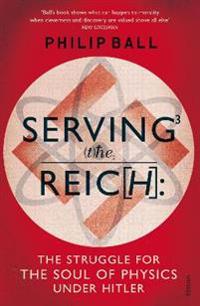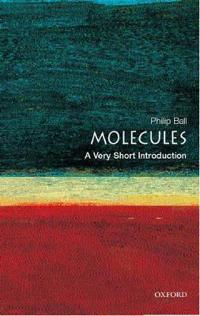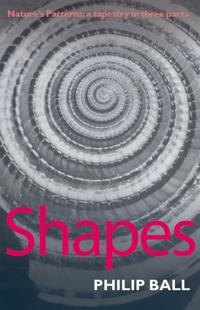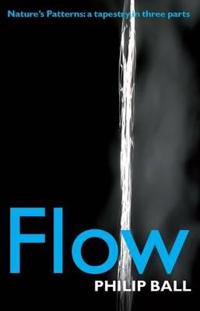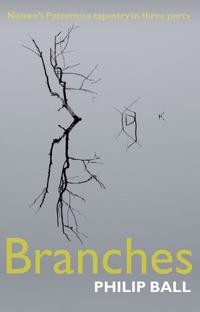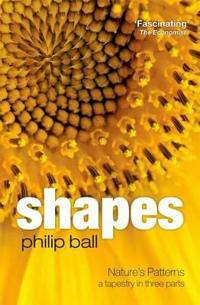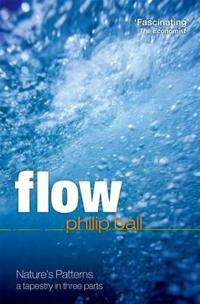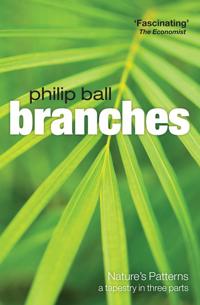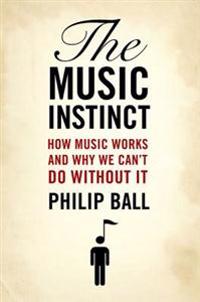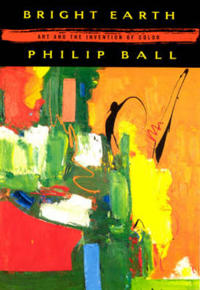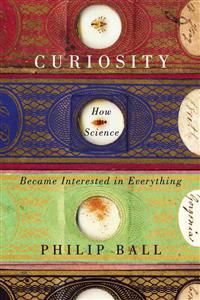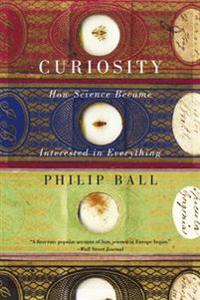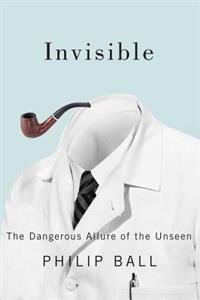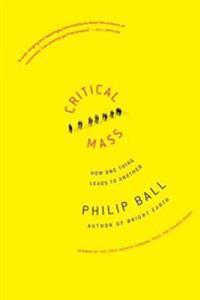Invisible (Inbunden)
avPhilip Ball, Philip Ball
ISBN: 9781847922892 - UTGIVEN: 2014-07If you could be invisible, what would you do? The chances are that it would have something to do with power, wealth or sex. Perhaps all three. But there's no need to feel guilty. This title tells the history of humanity's turbulent relationship with the invisible.[...]
Life's Matrix: A Biography of Water (Pocket)
avBall, Philip
ISBN: 9780520230088 - UTGIVEN: 2001-06-20One of the four elements of classical antiquity, water is central to the environment of our planet. In "Life's Matrix, "Philip Ball writes of water's origins, history, and unique physical character. As a geological agent, water shapes mountains, canyons, and coastlines, and when unleashed in hurrica[...]
Play Your Best 9 & 10-Ball (Häftad)
avPhilip Capelle, Janet Tedesco
ISBN: 9780989891745 - UTGIVEN: 2014-11Universe of Stone: Chartres Cathedral and the Invention of the Gothic (Häftad)
avPhilip Ball
ISBN: 9780061154300 - UTGIVEN: 2009-07Chartres Cathedral, south of Paris, is revered as one of the most beautiful and profound works of art in the Western canon. But what did it mean to those who constructed it in the twelfth and thirteenth centuries--and why was it built at such immense height and with such glorious play of light, in t[...]
Critical Mass (Häftad)
avPhilip Ball
ISBN: 9780099457862 - UTGIVEN: 200502Is there a 'physics of society'? Ranging from Hobbes and Adam Smith to modern work on traffic flow and market trading, and across economics, sociology and psychology, this title shows how much we can understand of human behaviour when we cease to try to predict and analyse the behaviour of individua[...]
Universe of Stone (Storpocket)
avPhilip Ball
ISBN: 9780099499442 - UTGIVEN: 200904In the twelfth century, Christians in Europe began to build a completely new kind of church - soaring, spacious monuments flooded with light from immense windows. These were the first Gothic churches, the crowning example of which was the cathedral of Chartres: a revolution in thought embodied in st[...]
Bright Earth (Storpocket)
avPhilip Ball
ISBN: 9780099507130 - UTGIVEN: 200805Colour in art - as in life - is both inspiring and uplifting, but where does it come from? How have artists found new hues, and how have these influenced their work? Beginning with the ancients - when just a handful of pigments made up the artist's palette - and charting the discoveries and developm[...]
The Music Instinct (Storpocket)
avPhilip Ball
ISBN: 9780099535447 - UTGIVEN: 201102Why have all human cultures - today and throughout history - made music? Why does music excite such rich emotion? And how do we make sense of musical sound? These are questions that have, until recently, remained mysterious. Now "The Music Instinct" explores how the latest research in music psycholo[...]
Unnatural (Storpocket)
avPhilip Ball
ISBN: 9780099551836 - UTGIVEN: 2012-03Can we make a human being? The question has been asked for many centuries, and has produced recipes ranging from the clay golem of Jewish legend to the mass-produced test-tube babies in Brave New World. Unnatural delves beneath the surface of the cultural history of 'anthropoeia' - the artificial cr[...]
Serving the Reich (Häftad)
avPhilip Ball
ISBN: 9780099581642 - UTGIVEN: 2014-10While some scientists tried to create an Aryan physics that excluded any 'Jewish ideas', many others made compromises and concessions as they continued to work under the Nazi regime. This book tells the story of physics under Hitler.[...]
The Elements (Häftad)
avPhilip Ball
ISBN: 9780192840998 - UTGIVEN: 200404This Very Short Introduction traces the history and cultural impact of the elements on humankind, and examines why people have long sought to identify the substances around them. Looking beyond the Periodic Table, the author examines our relationship with matter, from the uncomplicated vision of the[...]
Molecules (Häftad)
avPhilip Ball
ISBN: 9780192854308 - UTGIVEN: 200311The processes in a single living cell are akin to that of a city teeming with molecular inhabitants that move, communicate, cooperate, and compete. In this Very Short Introduction, Philip Ball explores the role of the molecule in and around us - how, for example, a single fertilized egg can grow int[...]
Nature's Patterns (Inbunden)
avPhilip Ball
ISBN: 9780199237968 - UTGIVEN: 200905Patterns are everywhere in nature - in the ranks of clouds in the sky, the stripes of an angelfish, the arrangement of petals in flowers. Where does this order and regularity come from? It creates itself. The patterns we see come from self-organization. Whether living or non-living, scientists have [...]
Flow (Inbunden)
avPhilip Ball
ISBN: 9780199237975 - UTGIVEN: 200906From the swirl of a wisp of smoke to eddies in rivers, and the huge persistent storm system that is the Great Spot on Jupiter, we see similar forms and patterns wherever there is flow - whether the movement of wind, water, sand, or flocks of birds. It is the complex dynamics of flow that structures [...]
Branches (Inbunden)
avPhilip Ball
ISBN: 9780199237982 - UTGIVEN: 200909As part of a trilogy of books exploring the science of patterns in nature, acclaimed science writer Philip Ball here looks at the form and growth of branching networks in the natural world, and what we can learn from them. Many patterns in nature show a branching form - trees, river deltas, blood ve[...]
Shapes (Pocket)
avPhilip Ball
ISBN: 9780199604869 - UTGIVEN: 201107Patterns are everywhere in nature - in the ranks of clouds in the sky, the stripes of an angelfish, the arrangement of petals in flowers. Where does this order and regularity come from? It creates itself. The patterns we see come from self-organization. Whether living or non-living, scientists have [...]
Flow (Pocket)
avPhilip Ball
ISBN: 9780199604876 - UTGIVEN: 201107From the swirl of a wisp of smoke to eddies in rivers, and the huge persistent storm system that is the Great Spot on Jupiter, we see similar forms and patterns wherever there is flow - whether the movement of wind, water, sand, or flocks of birds. It is the complex dynamics of flow that structures [...]
Branches (Pocket)
avPhilip Ball
ISBN: 9780199604883 - UTGIVEN: 201107As part of a trilogy of books exploring the science of patterns in nature, acclaimed science writer Philip Ball here looks at the form and growth of branching networks in the natural world, and what we can learn from them. Many patterns in nature show a branching form - trees, river deltas, blood ve[...]
The Music Instinct: How Music Works and Why We Can't Do Without It (Häftad)
avPhilip Ball
ISBN: 9780199896424 - UTGIVEN: 201207From Bach fugues to Indonesian gamelan, from nursery rhymes to rock, music has cast its light into every corner of human culture. But why music excites such deep passions, and how we make sense of musical sound at all, are questions that have until recently remained unanswered. Now in TheMusic Insti[...]
Bright Earth (Häftad)
avPhilip Ball
ISBN: 9780226036281 - UTGIVEN: 2003-05If you want to know why a good blue was so hard to find for so long, or why printed reproductions rarely match the colour of the originals, or why Rothko's canvases have changed colour in only 40 years, or just about anything else about the art and science involved in creating and using colour, "Bri[...]
Curiosity: How Science Became Interested in Everything (Inbunden)
avPhilip Ball
ISBN: 9780226045795 - UTGIVEN: 201304With the recent landing of the Mars rover Curiosity, it seems safe to assume that the idea of being curious is alive and well in modern science--that it's not merely encouraged but is seen as an essential component of the scientific mission. Yet there was a time when curiosity was condemned. Neither[...]
Serving the Reich: The Struggle for the Soul of Physics Under Hitler (Inbunden)
avPhilip Ball
ISBN: 9780226204574 - UTGIVEN: 2014-10After World War II, most scientists in Germany maintained that they had been apolitical or actively resisted the Nazi regime, but the true story is much more complicated. In "Serving the Reich," Philip Ball takes a fresh look at that controversial history, contrasting the career of Peter Debye, dire[...]
Curiosity: How Science Became Interested in Everything (Häftad)
avPhilip Ball
ISBN: 9780226211695 - UTGIVEN: 2014-09With the recent landing of the Mars rover Curiosity, it seems safe to assume that the idea of being curious is alive and well in modern science--that it's not merely encouraged but is seen as an essential component of the scientific mission. Yet there was a time when curiosity was condemned. Neither[...]
Invisible: The Dangerous Allure of the Unseen (Inbunden)
avPhilip Ball
ISBN: 9780226238890 - UTGIVEN: 2015-04If offered the chance--by cloak, spell, or superpower--to be invisible, who wouldn't want to give it a try? We are drawn to the idea of stealthy voyeurism and the ability to conceal our own acts, but as desirable as it may seem, invisibility is also dangerous. It is not just an optical phenomenon, b[...]
Critical Mass: How One Thing Leads to Another (Häftad)
avPhilip Ball
ISBN: 9780374530419 - UTGIVEN: 200605Ball shows how much can be understood of human behavior when we cease to predict and analyze the behavior of individuals and instead look to the impact of individual decisions--whether in circumstances of cooperation or conflict--on our laws, institutions and customs.[...]

